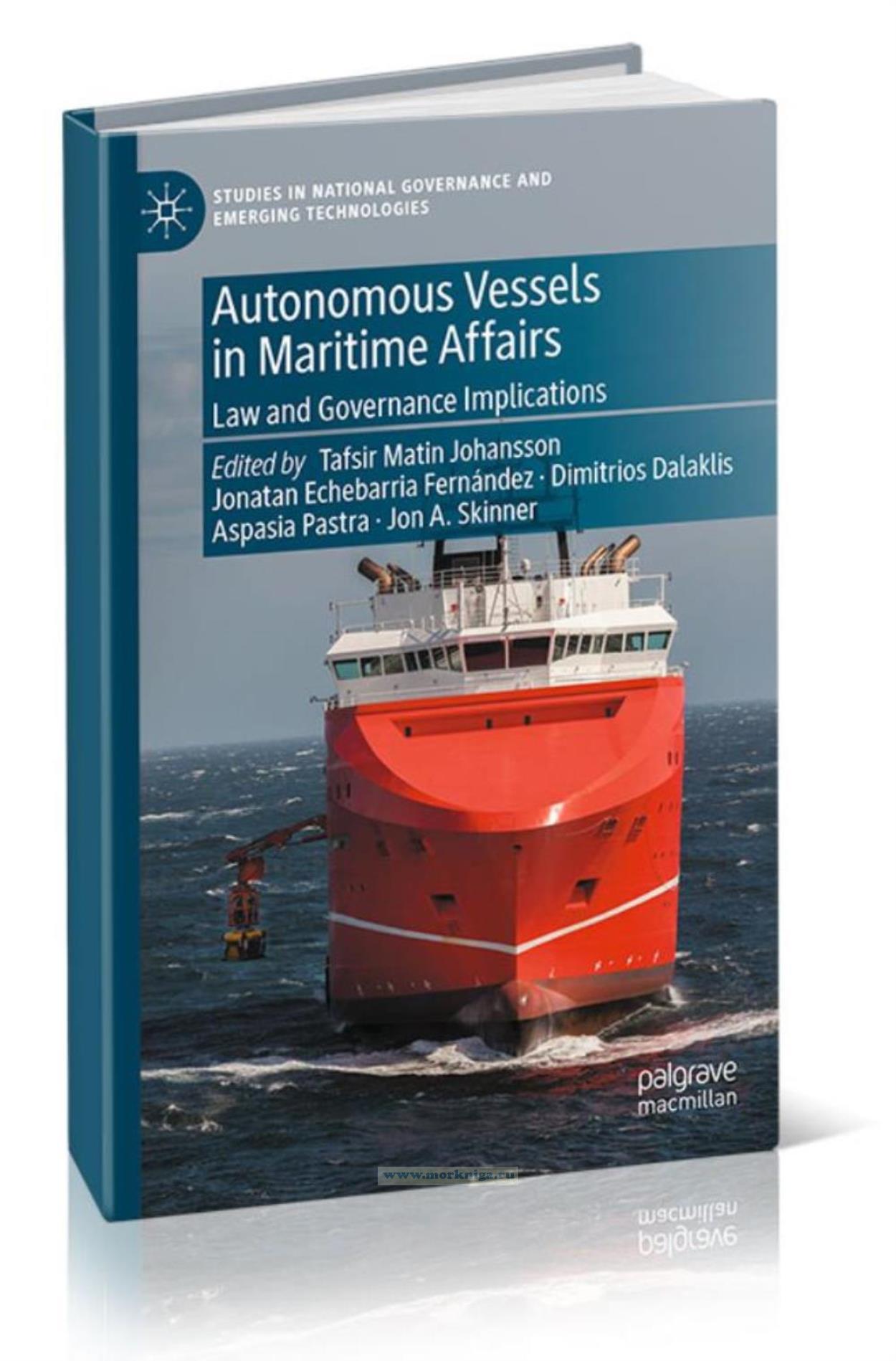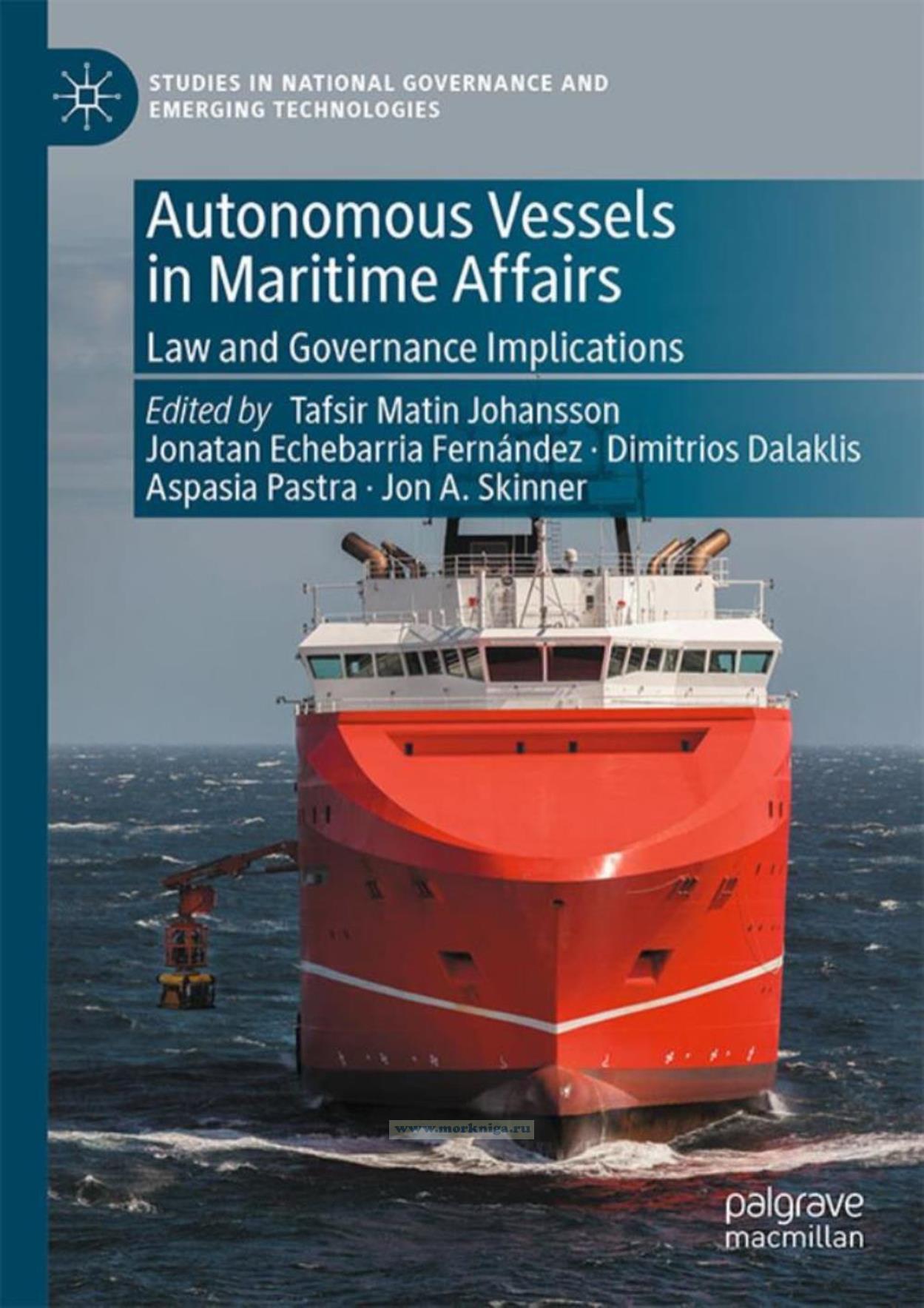Autonomous Vessels in Maritime Affairs/Морские автономные суда
Книга на английском языке.
This first-of-its-kind incisive and interdisciplinary volume spears through law and governance implications in relation to maritime autonomous surface ships (MASS). The book focuses on a wide array of timely, topical and thorny issues under eight distinct parts: setting the scene; naval warfare and security; safety, seaworthiness and techno-regulatory assessments; global environmental change; autonomous passenger transportation; liability and insurance; selected national and regional developments; and tying the threads. Thus, the main themes will stress on topics including evolution, environment, safety and security, society, insurance, liability, human element, design solutions and procedures, and selected national case studies. At the outset, the book commences with an insight into the role of innovation-diplomacy as the driving force that could expedite the transition from autonomation to autonomy, and a commentary from the Chair of IMO’s MASS. After navigating through the complex law and governance landscape, the book concludes with a chapter that captures the essence of the paradigm shift and ties all critical findings for further consideration.
Contents
1 Introduction to Autonomous Vessels in Maritime Affairs: Law & Governance Implications
Tafsir Matin Johansson, Jon A. Skinner, Jonatan Echebarria Fernandez, Aspasia Pastra, and Dimitrios Dalaklis
Part I SettingtheScene
2 Innovate or Fade - Introducing Ocean Innovation Diplomacy to the Maritime Sector
Andrei Polejack
3 Evolution of IMO’s MASS: Through the Prism of the Chair
Henrik Tunfors
Part II Naval Warfare & Security
4 Advent of a New Era in Naval Warfare: Autonomous and Unmanned Systems
Raul Pedrozo
5 Maritime Security in the Age of Autonomous Ships
Anna Petrig
Part III Safety & Seaworthiness
6 Designing Norms for Autonomous Ships: The Obligation to Call for Help and the Duty to Save Life in Danger at Sea
Michael Tsimplis
7 Safety and Sea worthiness Challenges of MASS in the Shipping and Port Sector
Klimanthia Kontaxaki and Vera Alexandropoulou
8 How to Ensure Safe Navigation: Navigation Safety Regulationin MASS
Mika Viljanen
Part IV Global Environmental Change
9 Autonomous Vessels in the Era of Global Environmental Change
Sean Pribyl
Part V Autonomous Passenger Transportation
10 Autonomous Urban Passenger Ferries – A New Mobility Modein Need of Appropriate Regulation
Oyvind Smogeli
11 New Design Solutions and Procedures for Ensuring Meaningful Human Control and Interaction with Autonomy: Automated Ferriesin Profile
Christoph A. Thieme, Marilia A. Ramos, Even A. Holte, Stig O. Johnsen, Thor Myklebust, and Oyvind Smogeli
Part VI Liability & Insurance
12 Autonomy, Autonomous Shipping and Coastal Authorities’ Concerns
Matti Eronen
13 Remote Control and Remote Risk of Liability? – Vicarious Liability for Remotely Controlled Vesselsin Scandinavian and English Law
Vibe Ulfbeck and Asl? Arda
14 Maritime Autonomous Surface Ships (MASS): Precarious Legal Position of the Shore-Based Remote Controller
Proshanto Kumar Mukherjee
15 Navigating the Turbulent Waters of Liability: Making the Case for the Application of Risk-Management-Based Liability Approachto Autonomous Vessels
Anil Ozturk
16 Insurance of Marine Autonomous Surface Ships: Risk Allocation, Seaworthiness and Technological Challenges from an Underwriter’s Perspective
Manuel Varela Choucino, Jonatan Echebarria Fernandez, and Johanna Hjalmarsson
Part VII Selected National & Regional Developments
17 Selected Industry Issues Regarding Autonomous Vessels: The Canadian Perspective
Maria Katsivela
18 The Societal Impacts of Autonomous Ships: The Norwegian Perspective
Ornulf Jan Rodseth, Dag Atle Nesheim, Aga the Rialland, and Even Ambros Holte
19 US Perspectiveson Regulating Maritime Autonomy
Annie Brett
Part VIII Tying the Threads
20 Autonomous Ships: Where Is It Going from Here?
Paul Topping

